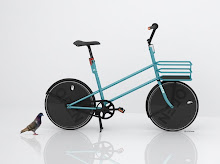The People for Bikes website has a nice, short article about the recent very rapid increase in cycling mode share in Seville, Andalusia (Spain), location of the Velo-city cycling conference which ends tomorrow. The separated cycling infrastructure - Seville was awarded the UN Habitat Best Practice Award for it's creation - was cited as the main reason for this.
The bike mode share is about 7%. What is the breakdown regarding gender, age and income level?
I am also curious about this excerpt:
“Great is the enemy of good.” The city’s infrastructure emphasizes network connectivity, not perfection. It’s far from the polished bikeways of Northern Europe, but the protected bikeways of Seville are safe, convenient and get you where you need to go without interruption.
First of all, I am happy to find out that most bike space was taken from car space.
But I don't understand how bike space taken from pedestrian space can be compensated elsewhere. After all, it's not like carbon and e.g. trees -- and how do pedestrians move in these spaces after losing space? Of course it is just political.
What is the lack of "perfection"? I would guess that the writer from People for Bikes was referring to what a Catalonian mobility consultant told me about: The two-way paths such as the one in the photo above - and this seems to be the most common design - which are narrow (two wider cargo/child-carrying bikes passing would need to veer into other space if available and of course if people are allowed to/want to ride side-by-side it is dangerous and/or illegal and one would constantly need to accelerate in front of or drop behind their travel partner.)
Certainly this lack of perfection - and conditions are certainly not perfect in many Northern European towns or even the best of them - is less important if unwarranted by the great but still low 7% mode share - but what if demand increases further? Will there be enough pressure to, for example, make double lanes single and a counterpart added to the other side of the street? The example photo in the linked article has a two-way on a one-way street which looks a 3- or 4-lane motorized traffic canal with parking removed on one side for the bike stuff.
And regarding "without interruption" I would like to see an example of major crossroads. Hopefully some colleagues and others who are there can fill us in.
Last but certainly not least, do the citizens of Seville deserve less than people in Amsterdam, Copenhagen etc. ? Certainly not, and regarding budgets and politics the very important question that needs to be made is if infrastructure for motor vehicles is just as far from perfection there.
From what I have read and heard there are other things which help make Seville great. It is certainly always a bit nicer to cycle in the sunshine with a good meal of fresh food at the end of your journey.






